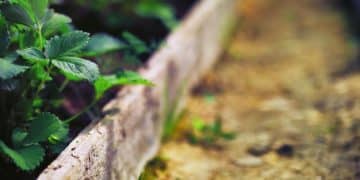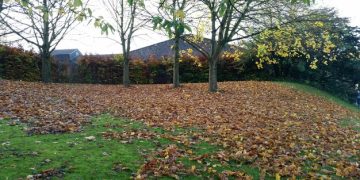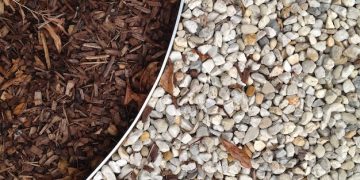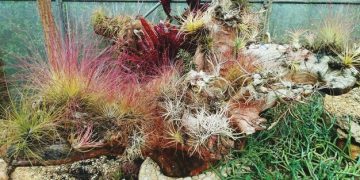Composting Secrets: Transform Yard Waste into Garden Gold in 3 Months
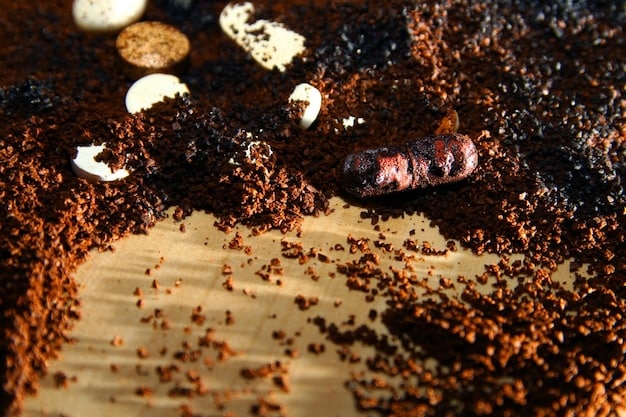
Discover composting secrets to turn your yard waste into garden gold in just 3 months, enhancing soil quality, reducing waste, and creating nutrient-rich compost for vibrant plants.
Unlock the composting secrets: turn yard waste into garden gold in just 3 months and reap the benefits of a thriving garden. This guide will take you through the process of creating nutrient-rich compost to transform your yard waste into valuable resources.
Why Compost? The Magic Behind Garden Gold
Composting is more than just a way to get rid of yard waste; it’s a magical process that transforms discarded organic matter into a nutrient-rich amendment for your garden. The benefits of composting extend far beyond simply reducing landfill waste.
The Environmental Impact of Composting
Composting significantly reduces the amount of organic waste sent to landfills. By diverting this waste, we reduce the production of methane, a potent greenhouse gas that contributes to climate change.
Composting for Soil Health
Compost improves the structure of your garden soil, enhances water retention, and increases the availability of essential nutrients for your plants. It also helps to balance the pH levels and supports a healthy ecosystem of beneficial microorganisms.
- Reduces the need for chemical fertilizers.
- Improves soil drainage and aeration.
- Suppresses plant diseases and pests.
- Enhances the growth and yield of plants.
By mastering the art of composting, you are not only creating a valuable resource for your garden but also actively contributing to a more sustainable environment. Composting closes the loop, turning waste into a powerful tool for nurturing life.
Setting Up Your Compost System
Setting up an efficient compost system is the first step toward creating your garden gold. There are various methods available, each with its own set of advantages and suitability for different spaces and lifestyles.
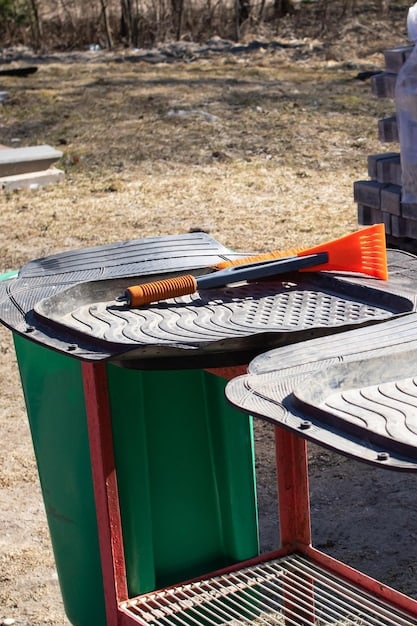
Choosing the Right Composting Method
The most common composting methods include open piles, compost bins, and tumblers. Open piles are simple and inexpensive but may attract pests. Compost bins offer better containment and temperature control, while tumblers streamline the turning process and speed up decomposition.
Location, Location, Location
Select a suitable location for your compost pile or bin. It should be easily accessible with good drainage and partial shade to prevent it from drying out too quickly. The ideal spot is relatively close to your garden and water source.
- Ensure the location has good airflow.
- Avoid areas prone to waterlogging.
- Keep it away from living spaces to minimize odors.
Once you have chosen your composting method and location, you are well on your way to creating a compost system that works for you. Proper setup will ensure efficient decomposition and high-quality compost.
The Green and Brown Ratio: Balancing Act for Compost
Achieving the right balance of “green” and “brown” materials is crucial for successful composting. This balance ensures that the microorganisms responsible for decomposition have the right mix of nutrients and carbon to thrive.
Understanding Green and Brown Materials
“Green” materials are nitrogen-rich and include fresh grass clippings, vegetable scraps, coffee grounds, and manure. “Brown” materials are carbon-rich and consist of dry leaves, shredded paper, cardboard, and twigs.
Achieving the Perfect Ratio
A good starting point is a ratio of 1 part green to 2 parts brown materials. However, this can vary depending on the materials you are using. The key is to maintain a balance that supports rapid decomposition without creating unpleasant odors. Too much green can lead to a slimy, smelly mess, while too much brown can slow down the process.
- Monitor the moisture level: The compost should be damp, like a wrung-out sponge.
- Observe for odors: Foul smells indicate an imbalance or anaerobic conditions.
- Check the temperature: A properly balanced compost pile will heat up as the microorganisms work.
Balancing the green and brown materials in your compost pile is essential for fostering a thriving ecosystem of decomposers. Regular monitoring and adjustments will lead to nutrient-rich compost in just three months.
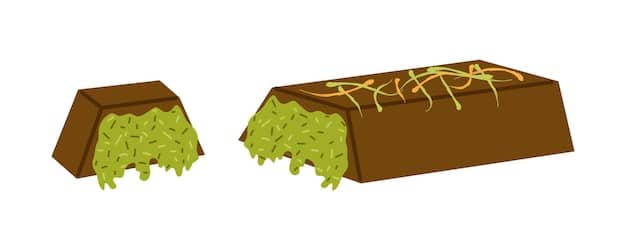
Feeding Your Compost: What to Include and Avoid
Knowing what to include and avoid in your compost pile is essential for producing high-quality compost and preventing unwanted problems, such as foul odors or pest infestations. Certain materials can enhance the composting process, while others can hinder it or pose a health risk.
The Yes List: Materials That Enhance Composting
Include food scraps from fruits and vegetables, coffee grounds and filters, tea bags, eggshells, grass clippings, dead leaves, small twigs, shredded cardboard, newspaper, and sawdust. These materials provide the essential nutrients and carbon needed for decomposition.
The No List: Materials to Avoid Composting
Avoid adding meat, dairy products, oily foods, diseased plants, pet waste, and chemically treated wood or paper. These items can attract pests, create unpleasant odors, introduce harmful pathogens, or contaminate the compost.
- Meat and dairy products: Attract pests and cause foul odors.
- Diseased plants: Can spread diseases to your garden.
- Pet waste: May contain harmful pathogens.
By feeding your compost pile with the right mix of materials and avoiding harmful additives, you can create a clean, efficient, and nutrient-rich composting system. Regular monitoring and adjustments will help you achieve garden gold in just three months.
Turning and Aeration: Speeding Up the Decomposing Process
Turning and aeration are crucial steps in accelerating the composting process. These techniques ensure that the microorganisms responsible for decomposition receive enough oxygen to thrive, leading to faster and more efficient breakdown of organic materials.
The Importance of Aeration
Aeration provides oxygen to the aerobic bacteria and fungi that break down organic matter. Without enough oxygen, the decomposition process slows down and can lead to anaerobic conditions, which produce foul odors and less desirable compost.
Methods for Turning and Aeration
Turning your compost pile regularly, typically every one to two weeks, is essential for aeration. You can use a garden fork or shovel to mix the materials thoroughly. If you are using a compost tumbler, simply rotate the tumbler as directed.
- Turning frequency: Every 1-2 weeks for optimal aeration.
- Tools for turning: Garden fork, shovel, or compost aerator.
- Signs of poor aeration: Foul odors or a slimy texture.
Turning and aerating your compost pile are simple yet essential steps that significantly speed up the decomposition process. By ensuring your microorganisms have enough oxygen, you can transform yard waste into valuable garden gold in just three months.
Troubleshooting Common Composting Problems
Even with the best intentions, composting can sometimes present challenges. Recognizing and addressing common problems early can help you maintain a healthy, efficient composting system and achieve your garden goals.
Common Composting Issues and Solutions
One common issue is a compost pile that is not heating up, indicating slow decomposition. This can often be resolved by adjusting the green-to-brown ratio or adding more moisture. Another frequent problem is foul odors, which usually result from anaerobic conditions or too much nitrogen.
Pest Control Measures
Pests are another concern for many composters. To prevent infestations, avoid composting meat, dairy, and oily foods. Ensure your compost pile is well-contained, and consider using a compost bin with a secure lid.
- Slow decomposition: Adjust the green-to-brown ratio or add moisture.
- Foul odors: Turn the pile to aerate or add more brown materials.
- Pest infestations: Avoid composting meat and dairy; use a secure compost bin.
By addressing common composting problems promptly and effectively, you can ensure a healthy and efficient composting system. Troubleshooting is a normal part of the process, and with a little knowledge and persistence, you can overcome any challenges and create beautiful garden gold.
| Key Point | Brief Description |
|---|---|
| 🌱 Green & Brown Ratio | Balance nitrogen-rich ‘greens’ with carbon-rich ‘browns’ for optimal decomposition. A 1:2 ratio is a good start. |
| 🔄 Regular Turning | Aerate the compost pile every 1-2 weeks to provide oxygen to microorganisms, speeding up decomposition. |
| 🚫 Avoid Meat & Dairy | Do not compost meat, dairy, or oily foods to prevent pests and foul odors. |
| 💧 Moisture Control | Keep the compost pile moist, like a wrung-out sponge, to facilitate microbial activity. |
Frequently Asked Questions
▼
With proper management, you can turn yard waste into compost in about three months. This timeline depends on factors such as the green-to-brown ratio, aeration, and moisture levels.
▼
Good compost is dark brown or black in color, has a crumbly texture, and smells earthy. It should not have any recognizable pieces of the original materials.
▼
Yes, vermicomposting (using worms) is an excellent option for apartments. It’s odorless, space-efficient, and can be done indoors with a worm bin.
▼
If your compost is too wet, it will be slimy and have a foul odor. Add more brown materials, like dry leaves or shredded paper, to absorb the excess moisture.
▼
Use your finished compost as a soil amendment in your garden. Mix it into garden beds, use it as mulch, or add it to potting mixes for healthier plant growth.
Conclusion
By following these composting secrets: turn yard waste into garden gold in just 3 months and unlock a sustainable way to enrich your garden, reduce waste, and benefit the environment.

